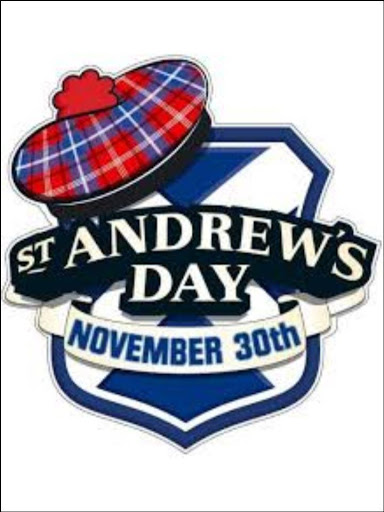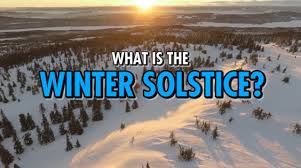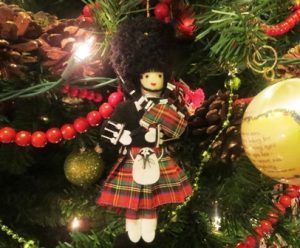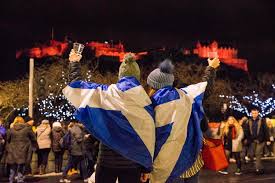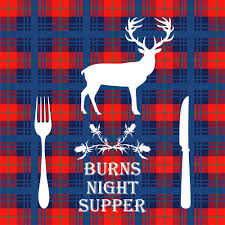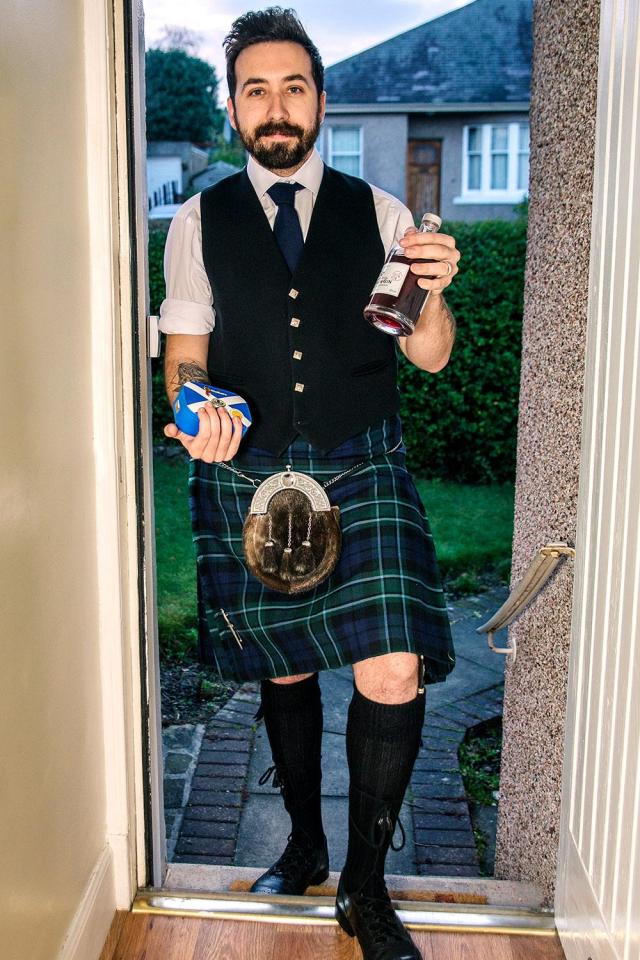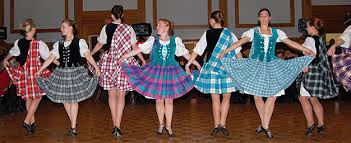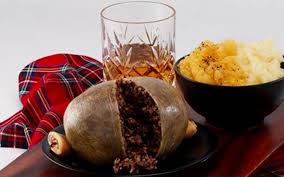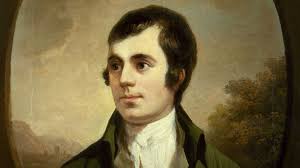Catherine McKinley
Fall & Winter Holidays Celebrated in Scotland: St. Andrews Day(Nov.30th), Winter Solstice(Dec. 21st), Christmas (Dec. 25th), Boxing Day (Dec. 26th), Hogmanay (Jan. 1st), Robert Burns Night (Jan. 25th).
SAINT ANDREWS DAY – November 30th
Despite never having been in Scotland, Saint Andrew was designated in 1320 (in the Declaration of Abroath) as Scotland’s Patron Saint. This is due to the fact that several of his relics were on a ship which had, previously, wrecked off the coast of modern day Fife and stayed. The day features street festivals which include dance exhibitions, parades, and special dinners: Cullen Skink (creamy fish soup), haggis, neeps (turnips), tatties (potatoes), Tipsy Laird dessert (custard layered with sponge cake, raspberries and Drambuie. Saint Andrew was a fisherman who was the very first apostle. Scotland’s saltire flag is a white cross (the type on which St. Andrew was crucified) on a blue field.
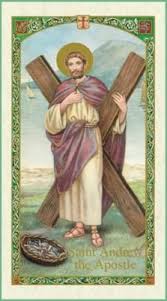
WINTER SOLSTICE – December 21st
While no longer the premier winter holiday, the Winter Solstice (the shortest day of the year) is still observed by some Scots. During the 400 year ban on Christmas, it took center stage as the main winter holiday. A Yule Log was brought inside and burned both for warmth and to rid the home of evil spirits. Special dinner: haggis (encased meat pudding; chopped sheep’s organs, oats, suet, spices), vegetables, plus shortbread crusted mince pies and Scottish Tablet are served at social gatherings.
CHRISTMAS – December 25th
Christmas in Scotland is widely celebrated now, but since it was formally and informally banned for 400 years (1560 – 1958) the Scots are relative newcomers to Christmas observance. While it was, privately, celebrated for decades, it wasn’t made an official holiday in Scotland until 1958. Most of Scotland’s Christmas traditions mirror those of the entire UK: Christmas trees, stocking stuffing, gift exchanges, formal dinners, wassailing, large cities hosting elaborate Christmas Festivals. The blocks long & wide Edinburgh Christmas Market includes rides, lavish light displays and vendor stalls which sell kilted stuffed deer, Scottie dogs, snowmen and Nessie, the Loch Ness Monster, as well as Scottish accented pottery, leather goods, clothing, jewelry & decorations. Food vendor’s sell Scottish specialties such as vegan haggis burgers and hot strawberry shakes.
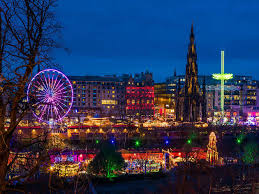
BOXING DAY – December 26th

A common practice since 1888, Boxing Day, initially, referred to wealthy families giving holiday food portions, in boxes, to staff. It has, since, evolved into a day when foods items are boxed up and given to friends and neighbors. Some of the items might be leftover desserts while others are baked specifically for giving away on Boxing Day.
HOGMANAY – January 1st
THIS is the main Winter Holiday in Scotland. The exact origin of the name is uncertain. It may be from the Gaelic “ogmaidne” which translates into “new morning.” The name appeared in written records beginning in 1604, however, the traditions are much older. Some are still widely practiced today; people gather together in private homes or outdoors, join hands and sing “Aulde Lang Syne” (“old long ago”) at midnight. This may be combined with another old custom of bonfires which are meant to drive away the old year’s evil spirits.
Some vintage traditions still practiced by some Scots include: FIRST FOOTING, during which the 1st guest to cross the threshold after midnight is expected to bring a gift of shortbread or black bun and whiskey. A related superstition dictated that the gender and hair color of the “first footer” was thought to predict the fortune of the family for the New Year. The “luckiest” is said to be a dark haired male.
Some Scots still practice “Redding the House” which involved a very thorough cleaning, including sweeping all the ashes from the fireplace. This would be followed by someone going through the house carrying a smoking juniper branch to chase away evil spirits, especially those who would bring diseases. In rural areas, “The Saining of the House” might occur. This involved blessing the house and livestock with water from a local stream.
BURNS NIGHT – January 25th
These celebrations honor the life and memory of Scotland’s Poet Laureate, Robert Burns. His most famous work is “Aulde Lang Syne.” The first Burns Supper was held in 1801 when 9 of his close friends gathered to honor him on the fifth anniversary of his death. It was such as success that they decided to make it an annual event but switched the date to that of his birth, January 25th.The night’s festivities include playing the pipes and an elaborate meal, the centerpiece being the haggis (which is piped in).


